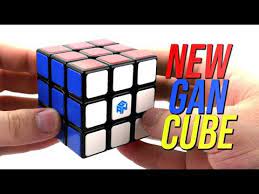Solving the Rubik’s Cube with GANs: An Introduction to GAN Cubes

The Rubik’s Cube is a classic toy that has been entertaining and challenging people for over four decades. While many have mastered the art of solving the cube, there are still millions of people who struggle with the puzzle. However, with the advancement of technology and machine learning, we now have a new solution to this age-old problem – GAN Cubes.
What are GAN Cubes?
GAN stands for Generative Adversarial Networks, a type of machine learning algorithm that is used to generate new data from existing data. GAN Cubes use this technology to generate new and unique solutions to the Rubik’s Cube puzzle.
How do GAN Cubes work?
GAN Cubes consist of two neural networks – a generator and a discriminator. The generator is responsible for generating new Rubik’s Cube solutions, while the discriminator’s role is to evaluate the quality of these solutions. The two networks work in tandem, with the generator trying to create a solution that the discriminator will accept as valid.
The generator begins by randomly shuffling the cube and then attempting to solve it. The discriminator then evaluates the solution and provides feedback to the generator. If the solution is not valid, the generator adjusts its approach and tries again. This process is repeated until the discriminator accepts the solution as valid.
Once the generator has successfully created a valid solution, it is added to a database of solutions. Over time, this database grows, and the generator learns from its successes and failures. With each iteration, the generator becomes better at creating valid solutions, and the quality of the solutions in the database improves.
Benefits of GAN Cubes
The primary benefit of using GAN Cubes is that they can generate unique solutions to the Rubik’s Cube puzzle that humans may not have thought of. This means that GAN Cubes can help expand our understanding of the puzzle and provide new insights into how it can be solved.
Additionally, GAN Cubes can solve the Rubik’s Cube puzzle in a fraction of the time it would take a human to do so. This makes GAN Cubes a valuable tool for anyone who wants to solve the puzzle quickly or wants to study different cube configurations.
Limitations of GAN Cubes
While GAN Cubes are an impressive technology, they do have some limitations. One limitation is that the solutions they generate are not always optimal. While they may be valid solutions, there may be more efficient ways to solve the puzzle that GAN Cubes have not yet discovered.
Another limitation is that GAN Cubes require a significant amount of computational power to operate. This means that they are not accessible to everyone and are primarily used in research and development settings.
Conclusion
GAN Cubes are an exciting new technology that offers a unique solution to the Rubik’s Cube puzzle. By using machine learning algorithms to generate solutions, GAN Cubes can provide new insights into the puzzle and help us solve it more efficiently. While they have some limitations, the benefits of GAN Cubes make them an essential tool for anyone interested in the Rubik’s Cube puzzle.